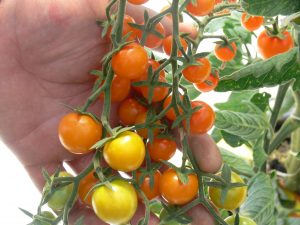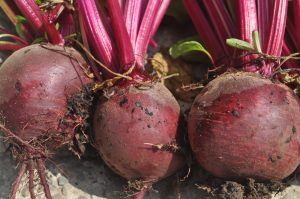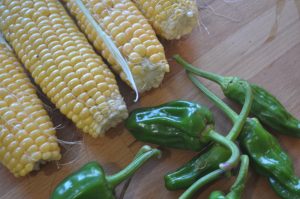In this article which first appeared in the August issue of Grow Your Own magazine, Kim Stoddart explains how to reduce waste at this hugely productive time of year
With this month and next, the veg patch will be in full glut fest swing. On the one hand, this fantastic bountiful time of year offers so much home-grown culinary opportunity. On the flip side, the abundance on offer can seem at times a little er, overwhelming. Courgettes, you just know I’m taking about you again… Conversely, other new fruit and veg is now coming into season, and some produce can be kept growing that bit longer than you would otherwise have imagined. All in all, it’s a terribly exciting time of year.
Here’s how to make the best of what’s on offer right now:
How to deal with the summer squash influx
Let’s cut to the courgette chase, a somewhat prickly running joke about now among many gardeners, faced with a seemingly never-ending supply. Alongside fermentation (covered also in the current issue of Grow Your Own magazine out now) there are actually countless ways to enjoy your over abundant supply.
Unless you want marrows for preserve making, you’re much better off picking your courgettes regularly (when they are about four to eight inches long) as this way they are at their most versatile. Delicious sliced, seasoned and sautéed simply in a little butter they can also be spiralised into so-called courgetti, a gluten free replacement for pasta or even used successfully as an ingredient for cakes. So you see, there’s plenty of new life and culinary opportunity in the (not so) old courgette yet.
One of the absolute highlights for me, as there’s nothing quite like freshly picked and blanched corn on the cob, coated with a little butter. It’s a taste of summer, and so much sweeter than any of the many day old cobs you can buy from the shop, which will have become slightly starchy (and less sweet) over time. It really sums up the reason that we grow our own – because it’s so very special indeed.
Unfortunately, this produce is also hugely delectable to earwigs who will congregate and move in as soon as the fruit is ready to harvest. So you have to be quick.
I should point out that earwigs are useful predators in the main and not to be concerned with otherwise. You just have to beat them to the sweetcorn harvest, as they have exceedingly good taste.
You can tell this delicious produce is ready when the cobs hidden under the green layers look nice and plump and the tassels above have turned brown or black. If in doubt, have a peek underneath, gently pulling back a layer and you’ll see if the kernels are ready as they’ll have turned a delicious shade of yellow, rather than unripe white.
Pick and come again
 Be it peas, cucumbers, beans or tomatoes, the sooner you pick this ripe produce the better it will be terms of texture and taste. There is a world of difference between a just ripe and a stringy bean, or a crunchy cucumber and a mushy yellow one. Also the more you pick, the more you’ll stimulate the plant into producing more and more for longer, so it’s a good move on so many levels. Salad leaves like salad bowl or rocket also benefit from regular harvesting (and watering) to avoid bolting in the heat of August.
Be it peas, cucumbers, beans or tomatoes, the sooner you pick this ripe produce the better it will be terms of texture and taste. There is a world of difference between a just ripe and a stringy bean, or a crunchy cucumber and a mushy yellow one. Also the more you pick, the more you’ll stimulate the plant into producing more and more for longer, so it’s a good move on so many levels. Salad leaves like salad bowl or rocket also benefit from regular harvesting (and watering) to avoid bolting in the heat of August.
The only exception is if you want to save some produce back for seed saving, in which case you’ll want to leave fruits or peas and beans on the plant for longer to fatten up the seeds as much as possible before saving for use the following year. In the case of salad, if it’s a dry summer then why not let a few plants flower and set seed which they will do, readily saving you a few quid the following year.
Beetroot
 Whilst the temptation is to pick all of these delicious earthy roots as soon as they have swollen to a reasonable size, leaving a few in the ground to overwinter is a great way of ensuring a good supply of edible leaves over winter. I personally love baby beetroot leaves in salad and they can also be added to a range of dishes much in the same way as chard or spinach.
Whilst the temptation is to pick all of these delicious earthy roots as soon as they have swollen to a reasonable size, leaving a few in the ground to overwinter is a great way of ensuring a good supply of edible leaves over winter. I personally love baby beetroot leaves in salad and they can also be added to a range of dishes much in the same way as chard or spinach.
……………….
A word on blight
At this time of year potatoes and tomatoes are susceptible, so you need to keep an eye out for the tell-tale brown blotches that appear on leaves. Not planting produce all together in blocks will go a long way towards prevent this airborne spore from quickly spreading from plant to plant, but otherwise, watering from below (at the base) where possible will help, as will removing affected leaves as soon as you see them and enabling sufficient airflow.
……………………………….
Kim Stoddart teaches polytunnel and climate change grow your own courses from her training gardens in beautiful West Wales. www.greenrocketcourses.com.

